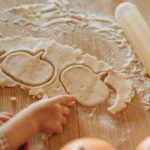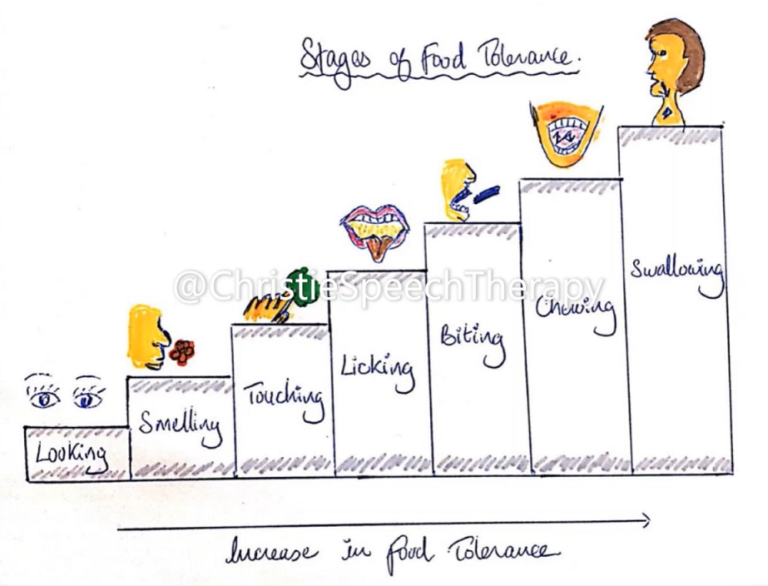Making Food Enjoyable









If your child:
- is hyper-sensitive to certain food textures (N.B: look out for excessive gagging)
- is having difficulty moving onto solid foods
- has a restrictive diet-only eats certain food textures/ colour/ taste (often seen in children on the autism spectrum)
Below are some tips and activities that you can do at home to build up their tolerance to new foods, and food texture:

Tips
Stages to increasing food tolerance
- Have a discussion about food. You can use picture books of food as a visual support to name the food. You can also use social stories to explain the benefits of eating a healthy and balanced diet.
- Bring them to the supermarket and encourage them to choose their own fruits, vegetables, grains, meat etc.
- Let them compose their own plates. Offer them a choice by using pictures/stickers/plastic toy food (e.g: broccoli/carrot, fish/chicken, and rice/bread). Make a deal with your child that since they’ve chosen these items to be put on their plate, they have to try to ‘smell, touch, lick bite, chew or swallow’ all of them. Remember, it doesn’t matter if they don’t eat it, it’s part of the process of increasing their tolerance/acceptance to these food
- Have a ‘finish’ plate. Once your child has ‘looked, smelled, touched, licked, bitten, or chewed’ the food but has not swallowed it, they can put the food on the ‘finish’ plate
- Praise your child once they’ve completed this exercise with every item on their plate
Extra Tips
- Offer the new food at least 10-15 times. Present the food in different textures and shapes (Carrot: boiled, mashed, raw, peeled, grated, sticks, sliced, baked, juiced, pureed, cubed)
- Offer 1 favourite food, 1 neutral food, and 1 new food on their plate
- Place a plate at the centre of the table to share food with the entire family. This provides an opportunity for you to model eating to your child. It also helps to alleviate the pressure from your child, as everybody can help themselves to the plate. Example of plate to share:
– mezze platter
-variety of mini sandwiches, pizzas, nuggets
-vegetable platter- variety of raw vegetables cut in bite sizes served with dips
-fruit platter- variety of fruits - Invite a child who is a ‘good eater’ and who is of a similar age to your child for a meal. Your child might be more willing to try to eat when they see another child modelling eating. Remember not to put pressure on your child by not emphasizing how well the other child eats
- Play calm and soothing music in the background during mealtime
Activities
Messy play is key to building up your child’s tolerance to a new food. Encourage your child to play with different textures and explore food by looking, smelling, touching, licking, biting, and chewing. It is okay if your child spits out the food and refuses to swallow it. It’s all part of the process. Don’t mind the mess- it will pay off in the long term. Remain calm and positive and don’t forget to have fun!
Activities without real food
- Plastic toy food– practice cutting the food and let your child pretend that they are a chef working at a restaurant
- Play-doh– let your child’s imagination run free and mould the play-doh into food that are of the colours of the rainbow (e.g: pink banana)
- Kitchenette– let your child pretend that they’re you for a day and that they have to prepare the family meals
- Sensory toys– to help your child explore different textures with their hands so that they can anticipate how these textures might feel in their mouth
- Playing with sand, paint, rice, pasta, bubbles
Activities with real food
- Cooking and Baking- encourage your child to participate in the kitchen( e.g: sifting flour, mixing and rolling dough, washing vegetables). When they get involve in the preparation of their food, they are more likely to eat it.
- Offer food tasters- warm (e.g gravy), cold (e.g ice cream), sweet (e.g jam), savoury (e.g cheese), bitter (e.g kale), sour (e.g citrus fruits), spicy
